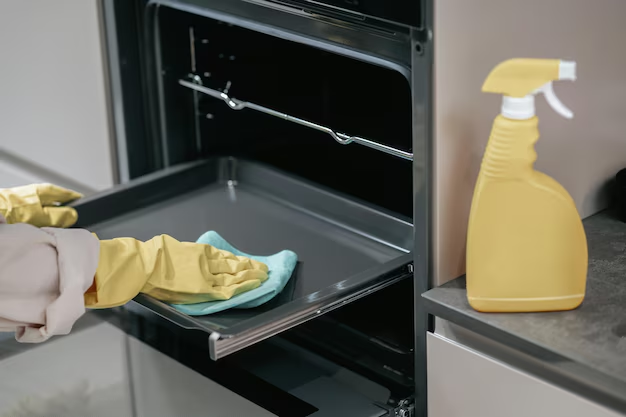Reviving Your Fridge: A Step-by-Step Guide to Cleaning After a Power Outage
Picture this: You return home after a long day, or maybe a weekend away, only to discover the telltale beep of your fridge alerting you to a past power outage. The once crisp air now carries a faint smell, and your heart sinks at the thought of spoiled food and a hygiene nightmare. Fear not, for this guide will arm you with everything you need to tackle the task at hand. Revitalizing your refrigerator doesn’t have to be daunting; with the right steps, it can be both efficient and effective.
Understanding the Impact of a Power Outage on Your Refrigerator
Before diving into the cleaning process, it’s essential to understand why a power outage can wreak havoc on your refrigerator. Typically, a fridge maintains a temperature that is below 40°F (about 4°C) to ensure the safety and longevity of stored food. However, when the power is out for an extended period:
- Food Can Spoil: Perishable items like meat, dairy, and pre-cooked meals are the first to spoil when temperatures rise.
- Mold and Bacteria Growth: Elevated temperatures provide the perfect breeding ground for bacteria and fungi.
- Odors Can Develop: Spoiled foods release unpleasant odors that can persist even after removal.
- Condensation and Moisture: When the power is restored, you might find pools of water due to moisture build-up.
Preparing to Clean Your Fridge
Cleaning your refrigerator effectively after a power outage involves some preparation. Here are the steps to get ready:
Assess the Damage
- Inspect the Situation: Open the fridge and carefully inspect the contents. Any food that has a bad smell or appearance should be discarded.
- Check the Duration: If you’re unsure how long the power was out, err on the side of caution and dispose of perishables that have been unrefrigerated for over four hours.
Gather Your Cleaning Supplies
Having the right tools on hand will make the cleaning process smoother. Here’s a checklist for reference:
- Mild dish soap
- Baking soda
- White vinegar
- A sponge or cleaning cloths
- A bucket or basin for soapy water
- Trash bags for spoiled food
- Rubber gloves
- Optional: Activated charcoal or coffee grounds for odor absorption
Protect Yourself and Your Kitchen
- Unplug the Refrigerator: Ensure the fridge is unplugged before you start cleaning.
- Use Protective Gear: Wear rubber gloves to protect your hands from potential contaminants.
Step-by-Step Guide to Cleaning Your Refrigerator
Now that you’re prepared, let's tackle the task step-by-step:
Removing Spoiled Food and Items
- Dispose of Unsalvageable Food: Carefully remove all food items from the fridge. Use this opportunity to examine each item, disposing of anything that feels warm or has signs of spoilage.
- Sort and Save What You Can: For items that are salvageable, transfer them to a cooler with ice packs until your fridge is ready to be restocked.
Cleaning the Interior
Remove Shelves and Drawers
- Carefully take out all removable parts from your fridge, such as shelves and drawers. This allows for easier cleaning.
Washing Interior Surfaces
- Mix a Cleaning Solution: In a bucket, combine warm water with mild dish soap. Use this solution to wipe down the interior of the fridge, including walls, the ceiling, and door compartments.
- Address Stubborn Stains: For any sticky or stubborn spots, apply a paste of baking soda and water, letting it sit for a few minutes before scrubbing with a sponge.
- Rinse and Dry: Rinse all surfaces with a clean, damp cloth to remove soap residue. Finish by drying thoroughly with a clean towel to prevent mold.
Sanitize Removable Parts
- Wash in Soapy Water: Scrub shelves and drawers with the same soapy solution, rinse, and dry completely before reinserting them.
Tackling Odors and Bacteria
Even after cleaning, odors might linger. Here’s how to freshen things up:
- Wipe with Vinegar: Use a cloth dampened with vinegar to wipe down all surfaces. Vinegar is a natural deodorizer and antibacterial agent.
- Neutralize Odors: For persistent smells, leave open containers filled with baking soda, activated charcoal, or coffee grounds in the fridge for a few hours.
Deep Cleaning Exterior and Coils
Clean the Door Seals
- Seal Scrubbing: Wipe down door seals with a mix of water and vinegar. Pay attention to grooves where debris might collect.
Dust the Coils
- Cleaning the Coils: Locate the refrigerator coils, usually found at the back or underneath the appliance. Dust them gently with a coil brush or vacuum cleaner to enhance efficiency.
Long-term Maintenance Tips
Keeping your refrigerator clean following a power outage is one thing, but ensuring it remains in peak condition involves ongoing care:
- Regular Inspections: Routinely check for signs of spoilage, clean spills immediately, and monitor for unusual odors.
- Organize Smartly: Store food correctly to maximize airflow and cooling. Consider labeling perishables with dates for easier rotation.
- Check and Change Filters: Some modern fridges come with air and water filters. Ensure they’re changed as needed to maintain efficiency and hygiene.
Quick Reference Summary 📝
Here's a quick glance at the essential steps:
- 🔍 Inspect and Remove: Visibly inspect and remove spoiled foods.
- 🧼 Clean and Scrub: Use soapy water to clean interiors, shelves, and drawer surfaces.
- 🍋 Neutralize Smells: Utilize vinegar, baking soda, or coffee grounds to combat odors.
- 💨 Maintain Integrity: Regularly check seals and coils to maintain fridge efficiency.
Understanding and managing the aftermath of a power outage involves more than just cleaning up; it requires strategic action and forward-thinking prevention. With the steps detailed above, you can rest assured that your refrigerator will be revitalized and ready to serve its essential role once more. Embracing these practices ensures that the integrity of your food storage and the safety of what we consume remains uncompromised, even in unforeseen circumstances.
